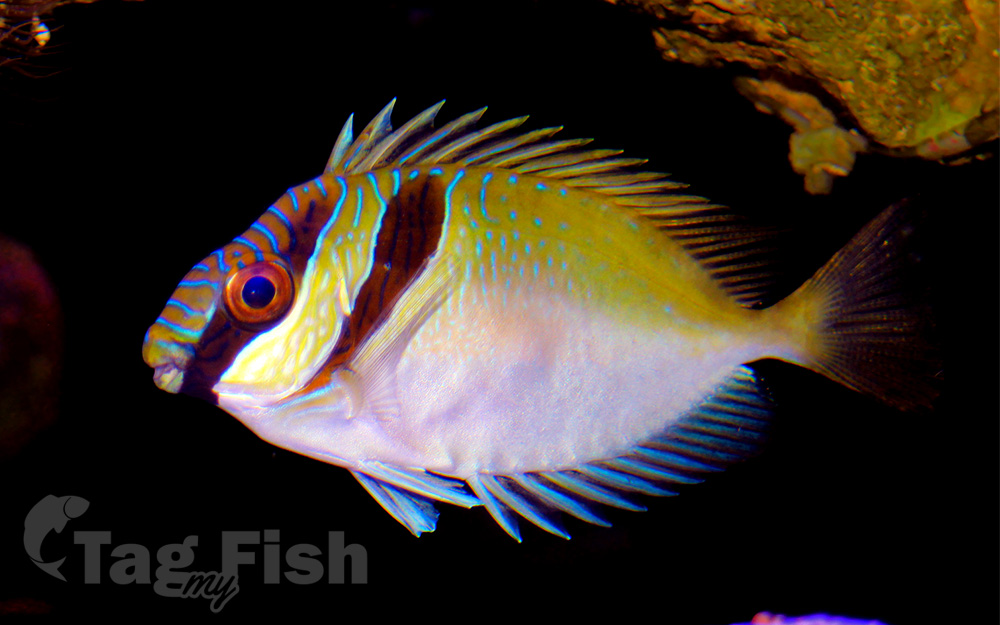Barhead spinefoot
(Siganus virgatus)

Classification
General data
Siganus virgatus has a deep and laterally compressed body which has a depth which fits 1.8 to 2.3 times into its standard length. The dorsal profile of the head is bulging and the front nostril has a high flange, slightly higher and pointed to the rear. There is a recumbent spine to the front of the dorsal fin.
Like all rabbitfishes, the dorsal fin has 13 spines and 10 soft rays while the anal fin has 7 spines and 9 soft rays. The fin spines hold venom glands.
The caudal fin is emarginate in juveniles and slightly forked in adults.
This species attains a maximum total length of 30 cm (12 in), although 20 cm (7.9 in) is more typical.
The body of this species is pale with a silvery white belly. There are two wide diagonal dark bands on the head and the anterior part of body. The head and the front part of the body are marked with light bluish spots and lines. The caudal and dorsal fins are yellow and they normally have a yellow back and caudal peduncle.
Siganus virgatus is found in the Indo-Pacific region from southern India and Sri Lanka eastwards to West Papua and Western Australia, north to the Ryukyu Islands. An individual was collected off the Adriatic island of Cres, but it thought that this is the result of deliberate introduction or transportation in ships ballast.
In Australia they are found from the Ningaloo Reef and Kimberley region in Western Australia along the northern coast to the Wessell Islands of the Northern Territory. They inhabit in tropical waters, associated with coastal coral reefs, in lagoons and outer reefs. They frequent rocky and hard coral areas with patches of sand. They are tolerant of turbid waters. Large juveniles and adults occur in pairs on slopes of reefs and estuaries. Small juveniles inhabit mangroves, moving to reefs in small groups, protected by coral reefs. They are found at depths down to 12 m (39 ft).










